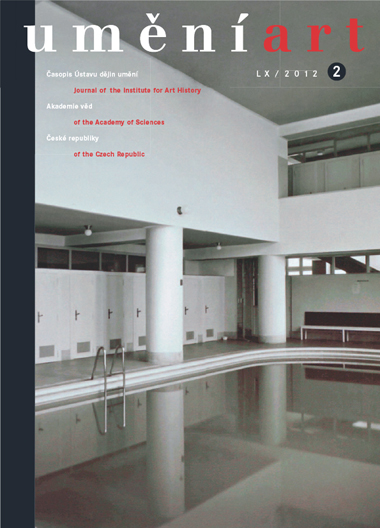Petr Skalický - Jan Dientsbier
Mezi vzpomínkou, exemplem a obrazem. Nástěnné malby v kostele sv. Vavřince v Brandýse nad Labem
Based on mediaeval texts and the mural paintings in the Church of St Lawrence in Brandýs nad Labem this article aims to contribute to the discussion of the complex mediaeval issue of the relationship between the word and the image. The authors show that earlier interpretations of the paintings were often subjected to contemporary discursive rules, to such an extent that they overlooked important details of the image. In the first part of the article the authors review a votive reading of the paintings of the so-called Miller Cycle, which are based on the story of Beatrix the custodian, known from the popular collection of exempla compiled by Caesarius of Heisterbach. The morality of the Miller Cycle, which is deviates from the original text, was probably accompanied by other paintings with similar themes. In the second part of the article the authors propose a new approach to a pair of separately interpreted paintings, The Throne of Grace and The Miraculous Draught of Fishes, located on the epistle side of the triumphal arch in the church. The authors draw on the homily 'On the Kingdom of Heaven', which is included in Chapter 11 of Vita Caroli Quarti, as a key to the reading of the paintings and they explain the paintings as a thematically compact allegory of the Kingdom of Heaven and Judgement Day. Again, the image is not meant to be an illustration of the homily; it is a new entity combining other themes, such as the legendary description of the visions of St Benedict. The third part of the article focuses on one scene from the Marian cycle of paintings in the presbytery. The rarely portrayed scene of the 'Attack on the Holy Family on the Road to Egypt' of the Marian cycle was in the past erroneously interpreted as the 'Flight into Egypt' and the 'Murder of the Innocents'. Finally, the authors point out a possible dualism in the relationship between the texts and the paintings. The aforementioned homily in the text of Vita Caroli Quarti relates to Charles journey to Stará Boleslav, which necessarily passed through Brandýs. The example of the Brandýs paintings shows that the mediaeval image was a distinctive type of medium with its own special 'grammar'. Consequently, it cannot be viewed merely as an illustration to a text.
Full-text in the Digital Library of the Czech Academy of Sciences:
https://kramerius.lib.cas.cz/uuid/uuid:cd7ffbf0-56f2-f55b-fe6b-7d5a81908b12
< back

